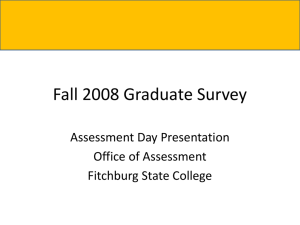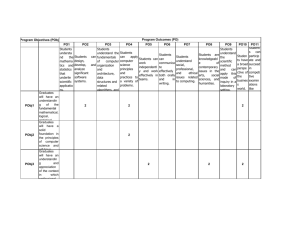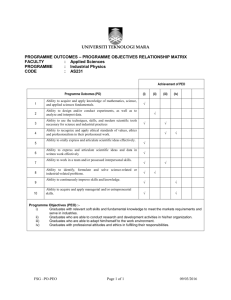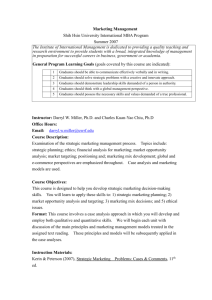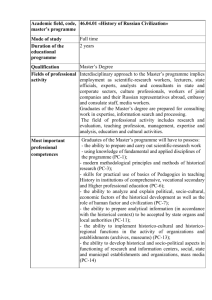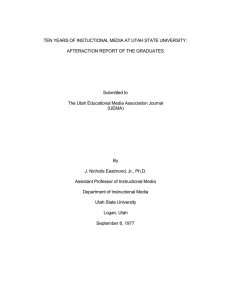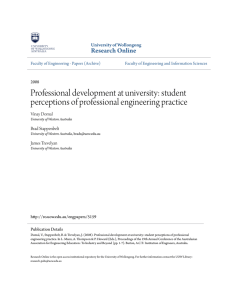The Graduating Student Survey - 201
advertisement
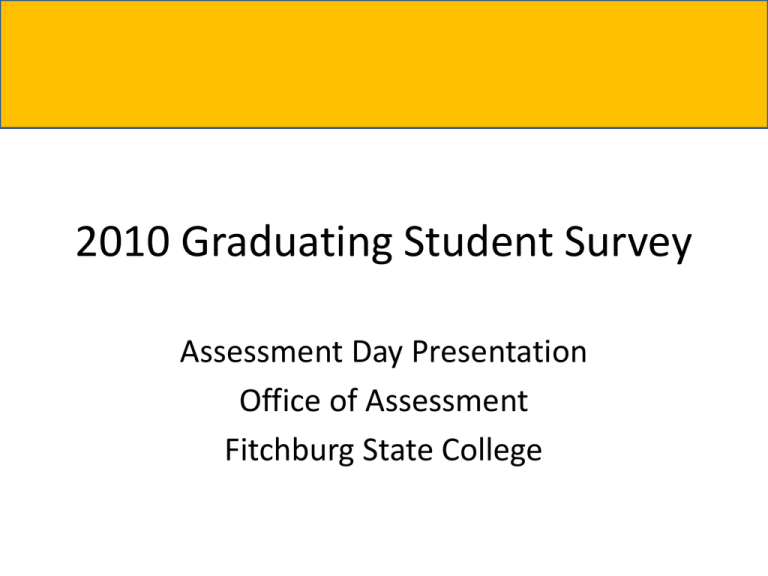
2010 Graduating Student Survey Assessment Day Presentation Office of Assessment Fitchburg State College History and methodology • Continuously administered since Fall 2008 • Banner workflow generates email warning of survey, link to SelectSurvey™ site sent in follow-up email. • Responses are voluntary. Sample and return rate • • • • 695 usable responses (518 UG, 177 GR) Graduates (January and May): 727 UG, 531 GR Return rates: 71% UG, 33% GR Degree programs represented: – Bio, Business, Comm. Media, Computer Science, CJ, Econ., Education, English, EXSS, Geo/Physical Sciences, History, Human Services, ITEC, IDIS, Math, Nursing, Political Science, Psychology, Sociology Topical sections • • • • • Classwork in major(s) Non-major classwork Library/media center Perceptions of learning Experiences with co-curriculum and student services • Future plans Results – Major studies • Baseline: Overall satisfaction with FSC (5-point scale) . – 3.86 UG (SD 1.17), 4.10 GR (SD 0.77). • Eleven items, overall mean 3.56 (SD 0.93) – Availability of classes, frequency of course offerings, class size, quality of instruction, quality of texts, faculty availability, timeliness of coursework, learning facilities, major-related extra-curricular activities, relevance to career goals, level of challenge. • UG items of interest: class size (3.87), availability of faculty (3.80), level of challenge (3.76), quality of instruction (3.76); availability (3.30) and frequency (3.05) of course offerings. Results – Gen Ed • Same item set as major coursework. • Scores generally about 0.30 lower than corresponding items for the major. Overall mean: 3.31 (SD 0.82) • UG items of interest: class size (3.55), faculty availability (3.45), overall quality of instruction (3.42); quality of texts/instructional materials (3.16); match to career goals (3.01). Results - Library • Five items: resources, accessibility, staff quality, staff as teachers, library facilities. • Align with domains of the LibQual survey. • Overall mean: 3.95 (SD 0.86) • Response means: 3.71 – 4.10. • Items of interest: Library was comfortable and a good place to study (4.10); Learned research strategies/sources from staff (3.71). Results – Learning Perceptions (I) • Ten items: written communication, oral communication, quantitative skills, dealing with diversity, conducting research, accessing information, using computer technology, critical reasoning, leadership, teamwork. • Five-point scale, “very weak” to “very strong.” Results – Learning Perceptions (II) • Perception end state typically about 4.15 • Perception of change typically about 0.70. • Items of interest: – “Comfort with diversity” end state 4.39 – Highest “gains” in accessing information (1.02), using computers (0.96), teamwork (0.96) – Lowest gains (0.44) in conducting research and oral communication. Results – Student Affairs • 30 student services and offices, summary question on extra-curricular campus life . • Five point scale, mean 3.66. • Highly variable response numbers. • Items of interest: Rec center (4.08); computer labs (3.99); FSC website (3.95); Admissions (3.86); Student Activities (3.84);help desk (3.93); dining (3.18); parking (2.96) Typical Academic Affairs Questions • How many graduates go on to careers in their fields of study? • How long does it take graduates to get their careers launched? • How do graduates assess their earning power and how successful are they in their chosen fields? • How many graduates go on for more formal education? Results – Future Plans • Most (UG, 70%, GR 91%) look forward to full-time employment. • Only 13% (UG, down from 34% last year) have full-time jobs or job offers, 12% (up from 9% last year) have part-time jobs or job offers. • Mean reported UG starting salary in field of study: $33,776. Mean reported GR starting salary in field of study: $43,648. (Both up, GR > UG). • 39.5% (up from 17%) of UG grads anticipate graduate school in the next 12 months. Overall • Size of survey size limits inputs. • Small Ns so far for most programs, though data from several years could be combined. • Some useful info for academic departments and College offices. Questions
